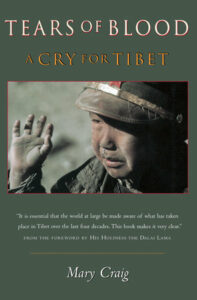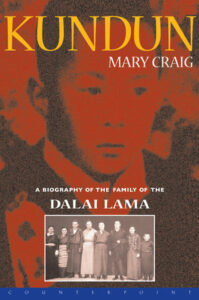Mary Craig
Mary Craig was a journalist and a British writer. She lived in Hampshire, England. A prolific author, she wrote 14 books since 1978, including a trilogy on Tibet, biographies of personalities, including John Paul II, Lech Walesa and Frank Pakenham.
Subscribe to our newsletter for news & events from Counterpoint Press.
Books
Tears of Blood
A Cry For Tibet
Since 1959, when China claimed power over this tiny mountain nation, more than one million Tibetans are believed to have perished by starvation, execution, imprisonment, and abortive uprisings. Many thousands more, including their spiritual and political leader, the fourteenth Dalai Lama, have been driven into exile.The country has been systematically colonized, so that indigenous inhabitants are now a second–class minority. Not only are Tibetans being squeezed out by Chinese settlers, but there are reports of Tibetan women being forcibly sterilized and of healthy full–term babies being killed at birth. Thousands of Tibetans languish in prison and suffer appalling torture. Rich mineral resources have been plundered and the delicate ecosystem devastated. Buddhism, the life blood of Tibet, has been ruthlessly suppressed.Mary Craig tells the story of Tibet with candor and power. Based upon extensive research and interviews with large numbers of refugees now living in exile in India, this book presents four decades of religious persecution, environmental devastation, and human atrocities that have caused Tibetans to weep "tears of blood."Kundun
A Biography of the Family of the Dalai Lama
Here is the story of Tibet as told by its remarkable first family--a story of reincarnation, coronation, heartbreaking exile, and finally the tenacious efforts of a holy man to save a nation and its people.Kundun is the first work to focus on the Dalai Lama's family--his parents, four brothers, and two sisters. Particularly compelling are Mary Craigs portraits of the Dalai Lamas siblings, who have negotiated with China on behalf of their country, enlisted the aid of international allies to spearhead Tibetan Resistance, and worked tirelessly to help thousands of sick and starving refugee children. This remarkable book opens in 1933 with the death of the thirteenth Dalai Lama and the frantic effort among Tibetan authorities to find his reincarnation. In their search for a baby boy displaying the characteristic marks of a Dalai Lama--tiger striped legs, wide eyes, large ears, and palms bearing the pattern of a sea shell--officials were led to a tiny village in northeastern Tibet, home of Lhamo Dhondup, a smart, stubborn toddler already known for his tantrums. Responding calmly when a group of high lamas and dignitaries tested his memory of a previous life, the child easily recognized a rosary, walking stick, and drum belonging to the thirteenth Dalai Lama.
In an instant this little boy and his entire family were swept into a world of unending ritual and complex internal politics. Lhamo was installed as the fourteenth Dalai Lama at the age of three, and was known from that point on as His Holiness or Kundun (the Presence), titles even his family members were obliged to use. A few years later the young Dalai Lama and his family were faced with China's invasion of Tibet. Living in exile since the late 1950s, they have waged a decades-long struggle for the freedom of their country. Particularly compelling are Craig's portraits of the Dalai Lama's siblings, who have negotiated with China on behalf of their country, enlisted the aid of international allies to spearhead Tibetan Resistance, and worked tirelessly to help thousands of sick and starving refugee children.

Catapult | Counterpoint | Soft Skull
20 Jay Street #704
Brooklyn, NY 11201
646.926.0805 | contact@catapult.co






